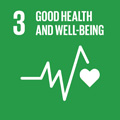- Docente: Cristina Angeloni
- Credits: 6
- SSD: BIO/10
- Language: Italian
- Teaching Mode: Traditional lectures
- Campus: Rimini
- Corso: Second cycle degree programme (LM) in Human Nutrition, Well-Being And Health (cod. 5812)
-
from Feb 27, 2025 to May 29, 2025
Learning outcomes
At the end of the course the student: - knows the basic elements on the biochemical role and the mechanism of action at the cellular, molecular, metabolic, genetic and epigenetic level of the nutraceutical components contained in food. - will be able to understand the rationale for using the main nutraceuticals in the protection / prevention of chronic degenerative diseases. - is able to communicate the optimal use of nutraceuticals within the framework of the guidelines for proper nutrition.
Course contents
Evolution of Nutrition
Nutrition as a Tool for Prevention
The Mediterranean Diet
Definition of Nutraceuticals, Dietary Supplements, Functional Foods, and Novel Foods
Nutritional and Health Claims
Phytochemicals in Foods: Classification
Pharmacological vs. Physiological Doses
Bioavailability of Nutraceuticals
Key Phytochemicals with Nutraceutical Activity
In-depth Analysis of Oxidative Stress: The Oxygen Paradox
Overview of Redox Chemistry: Reactive Oxygen Species (ROS) as Pro-oxidants
- Endogenous Sources of ROS: Mitochondria, NADPH Oxidase, Peroxisomes, Lysosomes, Cytosolic Sources
- Nitric Oxide (NO) and Peroxynitrite
- Exogenous Sources of ROS: UV Radiation, Ionizing Radiation, Environmental Pollution
- Reactivity and Stability of ROS
Oxidative Stress and Cellular Damage
- Effects on Lipids, Proteins, and DNA
- Severity of Oxidative Stress and Biological Consequences
- Related Pathologies
Inflammation and Neuroinflammation: In-depth Analysis
Nutraceuticals with Chemopreventive Activity
Nutraceuticals with Cardioprotective Activity
Nutraceuticals with Neuroprotective Activity
- Focus on Alzheimer’s and Parkinson’s Disease
Nutraceuticals and Nutrigenomics
- Introduction to Nutrigenomics
- Difference Between Nutrigenetics and Nutrigenomics
- Direct and Indirect Effects of Nutrients on Gene Expression
- Epigenome and Modulation by Nutraceuticals
Readings/Bibliography
Lecture notes in the form of a pdf file and scientific papers.
Nutraceuticals: Efficacy, Safety and Toxicity. Ramesh C. Gupta, Academic Press 2021
Selected paper published on Scientific JournalsTeaching methods
The course will be delivered through lectures, supported by PowerPoint presentations to enhance comprehension of the topics covered.
To facilitate learning and further study, the following educational materials will be made available on the virtual learning platform:
- PDF presentations, specifically prepared by the instructor, containing explanatory text and provided both before and during the lectures.
- Scientific articles from open-access journals, offering up-to-date evidence to supplement course content.
- Recorded video lectures using the Panopto system, accessible after each session and available throughout the Academic Year on the virtual platform.
In particular, the use of the lessons in asynchronous mode will allow students to prepare themselves for the exam, possibly with the remote supervision of the teacher.
The teaching participates in the University's educational innovation project.
Assessment methods
The examination at the end of the course aims to assess the achievement of learning objectives:
- to know the main nutraceuticals in food and mechanism of action
- to know the role of nutraceutical compounds in the prevention of chronic/degenerative diseases
- to know the rationale and evidence to use nutraceuticals, and to correctly communicate their use
The final exam consists of a written test structured into two sections:
-
Multiple-choice questions: The test includes 18 questions, each with four answer options, only one of which is correct. Each correct answer is worth 1 point, while incorrect or unanswered questions do not incur penalties.
-
Open-ended questions: There are 2 open-ended questions, each graded on a scale from 0 to 6 points, based on the completeness, accuracy, and depth of the response.
The final score of the written test, expressed in thirtieths (out of 30), is determined by summing the points obtained from the multiple-choice and open-ended questions.
Optional Task – Nutraceutical Intervention Plan
In addition to the written exam, students may choose to complete an optional task, which involves designing a nutraceutical intervention plan aimed at maintaining the health status of a model subject assigned by the professor. This task will be evaluated on a scale of 0 to 2 points, which will be added to the final written exam score.
The maximum possible score, considering both the written test and the optional task, is 32/30, allowing for the possible awarding of honors (lode) if the total score exceeds 30/30.
Teaching tools
PC, overhead projector, virtuale.unibo.it, Panopto, Quizzes on Lecture Topics for Self-Assessment of Learning
Office hours
See the website of Cristina Angeloni
SDGs

This teaching activity contributes to the achievement of the Sustainable Development Goals of the UN 2030 Agenda.
